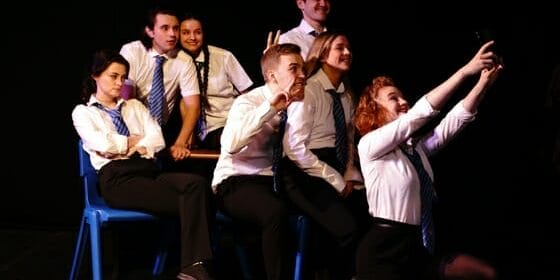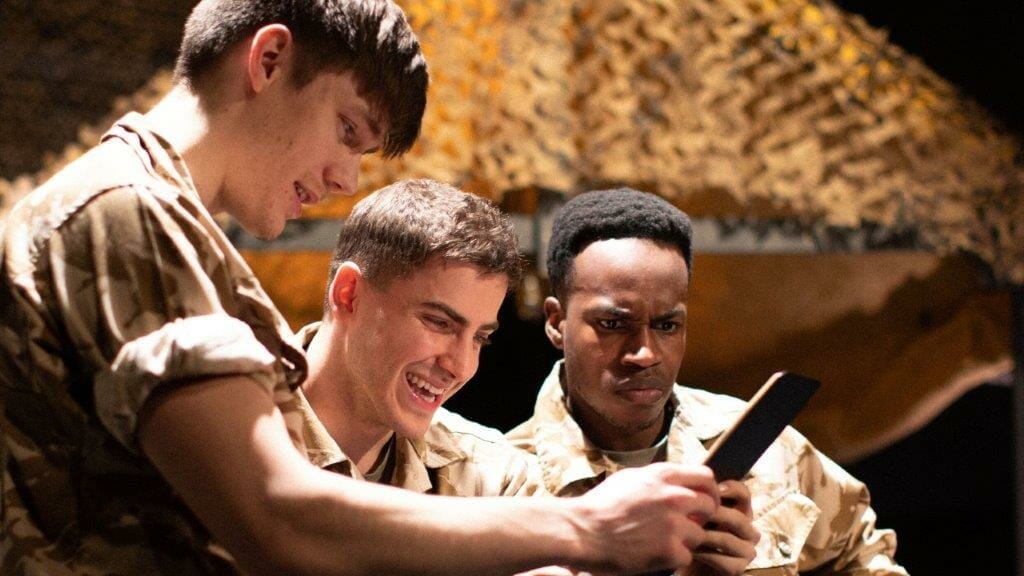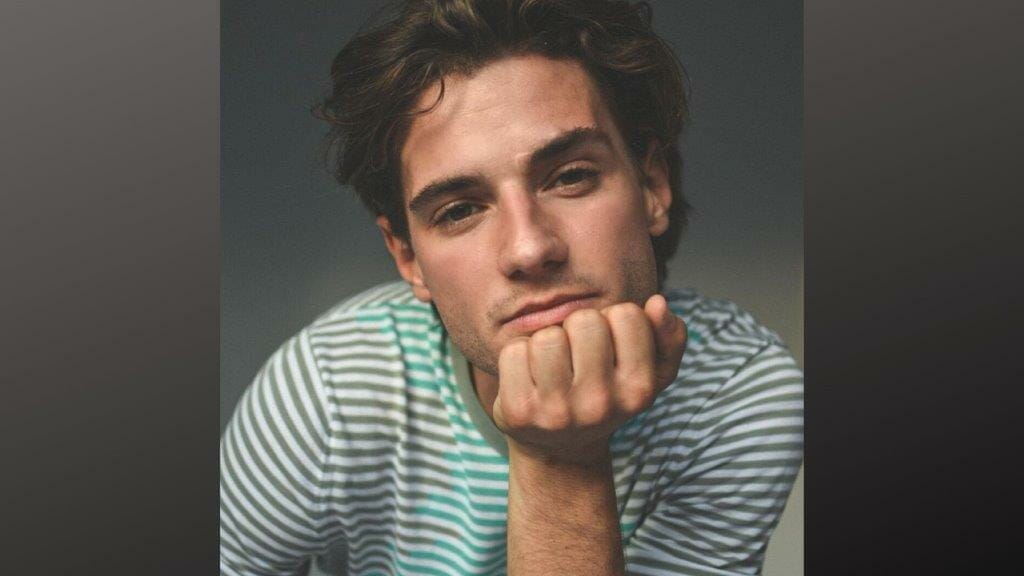
History was not my favorite subject at school, I was unable to distinguish Anshluss from Antwerp, and failed my Standard Grade (the Scottish version of GCSE) miserably. I fared much better in Modern Studies, which ironically will soon form the history syllabus, Iain Hollingsworth‘s The End of History, at The Tristan Bates Theatre teaches us that the past never really ends, and lessons which should be learned, often end up as mistakes repeated.
The unlikely musical follows a group of year ten students in to year eleven, the preparations for their GCSE exams, and the inevitable teenage drama which ensues. Their overworked teacher, who enjoys one glass of wine per essay to be marked, tries to bring the subject alive, but ultimately it is the students who take on this task through a variety of song and dance routines.
Without even looking at the programme, it was clear within a few minutes that the writer of this musical was a history teacher. Not many musicals can claim to have songs about The League of Nations, or Treaty of Versailles, and each one is laden with facts and figures that would intimidate even the hardiest history buff.
But, it’s easy not to be bogged down by the history lesson element, and instead enjoy the fine example of an ensemble performance, each of the students has their own distinct personality, and contributes to the overall plot. Daniel Orpwood gives particular depth to the character of Gary, and gives a moving performance with ‘When Will I Be Free?’. Eleanor Shaw gives a polished portrayal of class geek, Beth, and Joshua Lewindon shines as Andy in the song and dance elements.
The character with the most to explore is Rachel, wonderfully played by Sylvie Briggs, her story is revealed bit by bit and is the most engaging to watch. As newspaper cartoons from the past are projected behind the cast, we start to learn more about this group, and how the dynamics of a classroom can closely resemble the rhetoric of nations, and their governments.
In the midst of all the history, it feels the present is a little overlooked. Some lines suggest a bigger plot which is never explored any further, such as Andy buying Gary expensive trainers, or the sudden appearance of two characters in the second act, who don’t seem any different to the ones they replaced, not least because they’re played by the same actors.
As the class move through the curriculum of the short 20th Century, they take on the role of countries in song and dance routines, which director Jessica Dawes Harrison has choreographed perfectly to fit with the relevant era. From the 1920’s Charleston to 1950’s rock and roll, it gives The End of History a wonderfully eclectic feel.
Far from being a boring history lesson, The End of History is a cleverly conceived musical, which brings historical events to life in an amusing, and often touching way. While some of the facts could have been replaced with deeper character exploration, I can’t help feeling that had this musical been around at the time, I would have had a much greater interest in high school history, and may even have achieved that allusive Standard Grade.



















